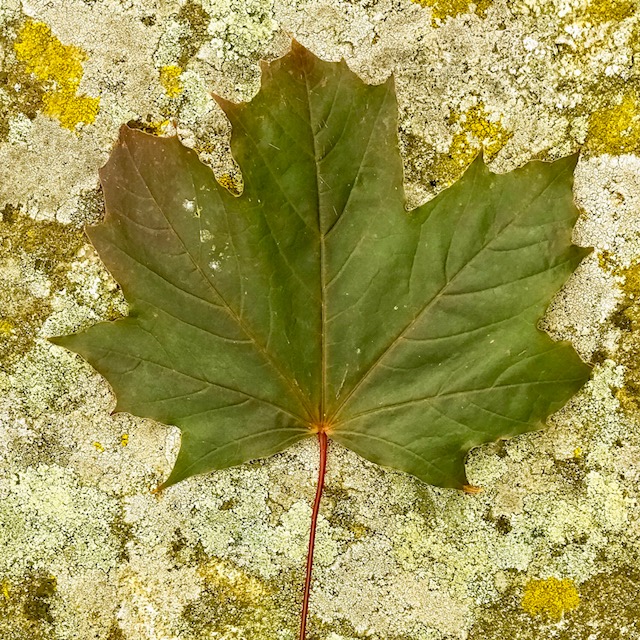I'm still in Norway. Two weeks ago, I wrote about (i) Norway spruce that are planted in North America, and (ii) Sitka spruce that are planted in Norway (read). In some areas of their new continents, those two species have probably become naturalized(i.e., self-supporting).
Another tree from Scandinavia that is widely planted in North America is Norway maple, Acer platanoides. In Norway, the tree is called "spisslønn," which translates to "pointy maple."
Leaves are 6"/15cm wide. They look similar to the leaves of sugar maple, Acer saccharum, from eastern Canada and northeastern U.S.
The U.S. National Park Service reports that Norway maple was first introduced to North America in 1756 and has been offered for sale ever since. George Washington reportedly bought two of them for his home at Mount Vernon.
Due to the tree's hardiness and adaptability, it quickly became a favorite of city planners and landscapers throughout the northern temperate zone in North America.
It tolerates compacted soils often found along city streets. For this reason, in many North American cities, streets are lined with them.
Native Norway maples have green leaves. Nurseries have created purple-leafed cultivars, which are often planted anywhere the tree grows (including in Norway).
When planted in North America, Norway maple tends to take over. It has become naturalized in many parts of North America.
The tree is now banned or considered invasive in a number of states. Nowadays, the U.S. National Park Service bluntly says: "Don’t plant Norway maple." Nevertheless, it is widely used as a beautiful landscaping tree with either green or purple leaves.
So, what have we given Norway in return? Grand fir, Abies grandis, a tree that is native solely to the Pacific Northwest. Grand fir has been successfully introduced throughout northern Europe.
In Norway, the tree is called just "grand."
I saw large grand fir, probably up to 16"/40cm in diameter, growing in Norway. I do not know whether the tree has become naturalized.
I also saw a plantation of grand fir, about 6'/2m tall, probably for Christmas trees. Just as in the Pacific NW, firs are used for Christmas trees because the needles do not fall off as quickly as spruces.


